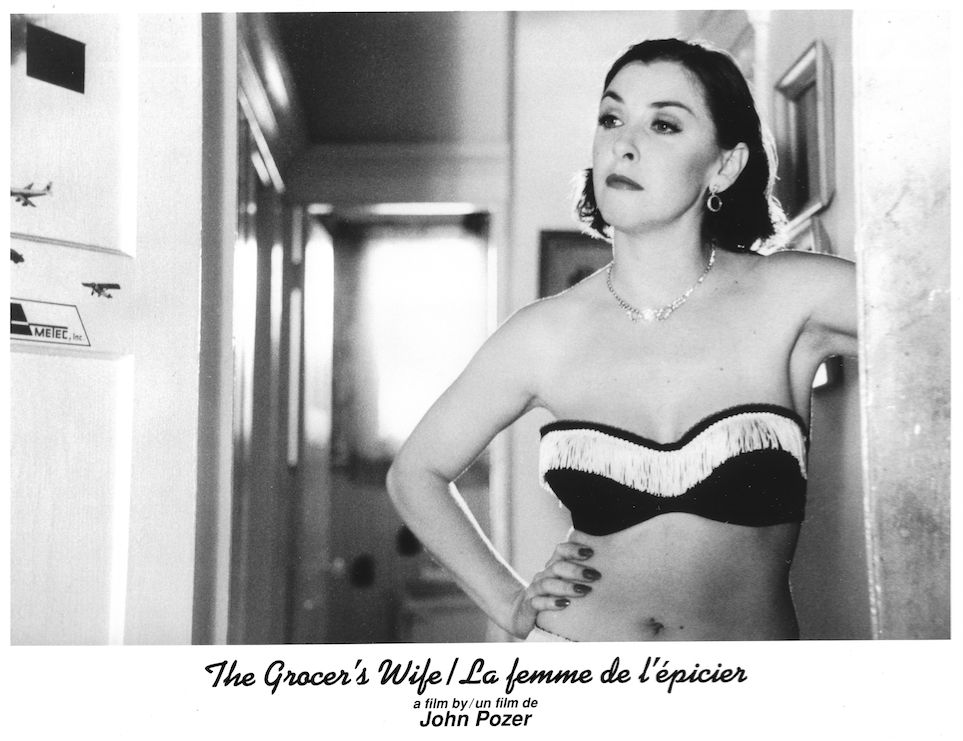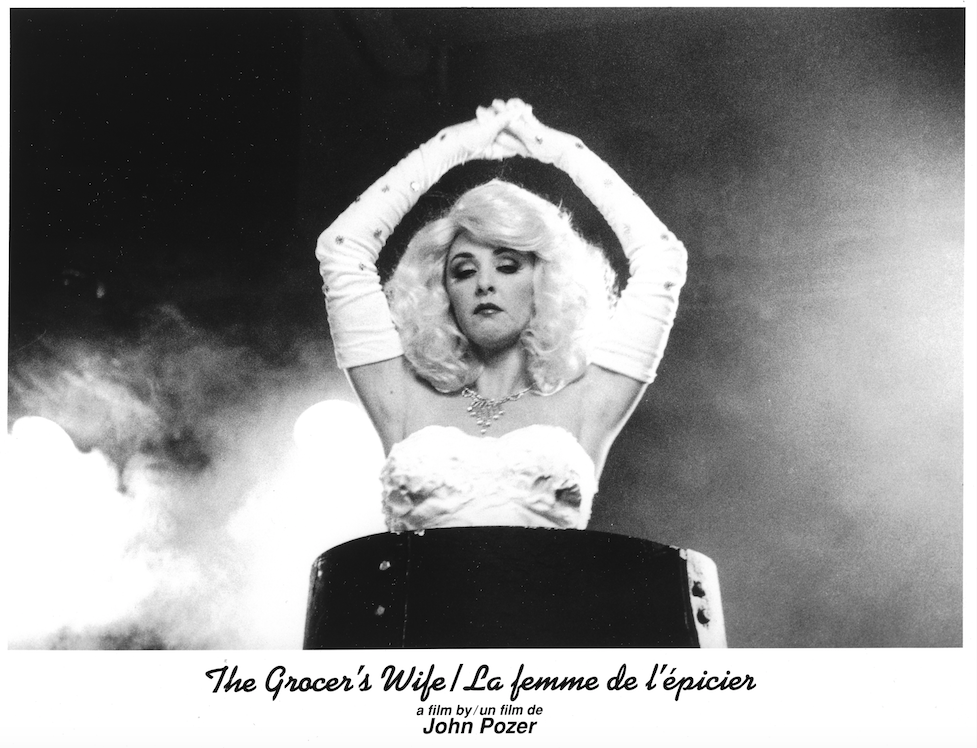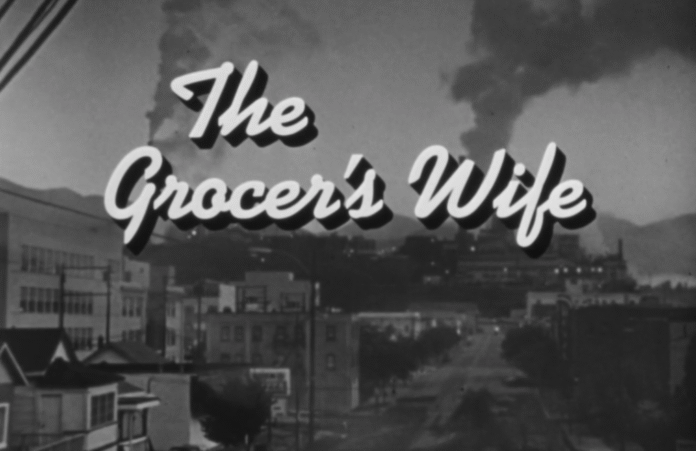In 1989, Vancouver writer-director John Pozer made The Grocer’s Wife, a noirish comedy that used Trail’s industrial backdrop to create an eerie atmosphere.
The independent film caused a minor sensation when it debuted a few years later on the festival circuit, but it was never released on video. Except for a few special screenings and TV airings, there has been no way to see it. At last, Pozer has had the film digitized and placed on Vimeo, where it can be streamed for free.
It remains one of the few films ever shot in Trail.
“I still believe in Trail as a filming destination,” Pozer said in an interview last week. “The people of Trail certainly helped me make the film. Trail is completely unique. It’s like no other little town. The whole thing wouldn’t have been as big, as magic, as wonderful of an outcome if it hadn’t been for Trail.”
Although he was born in Kamloops, Pozer’s first exposure to Trail wasn’t until 1986, when he came to the area to work on Housekeeping, filmed in Nelson. Pozer had written to director Bill Forsythe, asking if he could be an observer on set. On the way back to Vancouver, Pozer detoured through Trail and was astonished to see the smelter lit up at night.
“It was like I had stumbled into an alien landing site,” he said. “I honestly couldn’t believe it. The lights were bright, the sound was pervasive, and when I turned on the radio, it was in Italian.” (At the time, Ben Angelucci provided Italian-language newscasts on the Kootenay Broadcasting System.)
“I felt completely disoriented,” Pozer said, “but I loved it.”
Mother and son
Pozer spent the night in Trail and walked around the next morning, realizing that he’d found the setting for a story that he had been working on for months as part of a thesis project for a UBC master’s program.
His starting point was a Freudian quote he’d read: “A son’s first day of freedom is when his mother dies.” It planted the seed for a story where a man’s mother dies but she is immediately replaced by another mother figure.
In the film, mild-mannered Tim Midley (played by Simon Webb) works at the smelter and lives with his controlling mother (Andrea Rankin). After his mother falls ill to smelter fumes, a stripper (Susinn McFarlen) waiting for a train out of town moves in with him. To his growing dismay, he finds she has no intention of leaving. The title character, Mrs. Friendly (Nicola Cavendish), offers a way out.
Much of the movie was actually shot in Vancouver, so don’t bother trying to find the Midley home in Trail. But Trail nevertheless figures prominently, with scenes on the old bridge, Groutage Avenue, the Esplanade, the smelter staircase, the Masonic Lodge, and a hill above West Trail. Shots of the smelter’s belching stacks recur throughout.
While The Grocer’s Wife paints an unflattering portrait — Pozer describes the smelter as “a big industrial machine that towers over [the town] and gives it a sense of a societal prison” — Pozer says the film doesn’t actually take place in Trail, but in a nameless town.
“Trail just created this backdrop, this texture, this opportunity for me to explore certain things and places that I had been inspired by,” he says. “The way the [smelter] stood over the town created this skyline.
“I was just smitten by the entire imagery of the town. I think it’s one of the most European cities in British Columbia.”
The film also has a timeless quality. Shot in black and white, it seems to come from a bygone era, but what era is hard to say.

Shooting in Trail
After several subsequent visits to Trail to scout locations — including a tour of Cominco — Pozer arrived with his cast and a mostly student crew. They shot for five or six days in July 1989. The budget was low, but the production enjoyed support from Trail city hall.
“Once we got there, we had kind of the key to the city. The mayor [Marc Marcolin] said ‘you can shoot wherever you want on the streets,’ and this is all without permits … To shoot on a bridge requires a fair bit of traffic control, a lot of organization, and a lot of support from the city administrators. And we got all of the support that we needed.”
It was Pozer’s first time directing. Another 40 days of filming followed in and around Vancouver, where the production had a magnetic pull for prospective crew. So great was the interest, Pozer had to turn down people who offered to work for free.
The film would turn out to be a proving ground for other film students who became part of what was dubbed the West Coast Wave. Lynne Stopkewich, Mina Shum, Bruce Sweeney, Reginald Harkema, Greg Middleton, Ross Weber, and Glen Winter were among those who worked on The Grocer’s Wife and went on to noteworthy careers.
Definitely not The Beachcombers
Post-production took years. Pozer set up an editing suite in his parents’ basement in Vancouver and settled into a cycle of editing and fundraising. Processing the 16-millimeter film stock alone was a significant cost. But Pozer felt he was in no rush.
He ultimately transferred from UBC to Concordia University in Montreal, and completed the film there, including the sound mixing. His cousin, Mark Korven, contributed a striking, jazzy score.
When an unfinished preview was screened for a Toronto International Film Festival selection committee, Pozer was asked where the film was from. “I said, ‘Well, I shot it in British Columbia.’ They were all kind of raised on Beachcombers and the beautiful coast and mountains.
“These selection committee people just wondered how in the world did this come through in a Canadian setting without any true organized Telefilm help. We were very proud of that. It was a struggle, but it certainly hit them as a surprise and I think that stood us in good stead of getting us into our first premier festival.”
The film debuted in Toronto in 1991 and received an honorable mention as Best Canadian Film. It made an ever bigger splash when the winner of that category, Atom Egoyan, signed his $25,000 prize over to Pozer.
Further screenings followed in Vancouver, at Cannes, and at smaller festivals in Europe. In May 1993, the film played at the Royal Theatre in Trail with Pozer and star Simon Webb in attendance. Some people bristled at Trail’s depiction as a smoke-choked moonscape, but Pozer explained it was part of the film’s fictional setting, not a commentary on the city.
At the 1993 Genie Awards, Pozer received the Claude Jutra Award for best first feature, Nicola Cavendish won best supporting actress, and Mark Korven received a nomination for best original score.

The film’s afterlife
Since its initial run, opportunities to see The Grocer’s Wife have been few and far between. The film aired on the CBC in the 1990s, and Pozer was surprised one day to receive a call from his mother-in-law, who spotted it on television while she was vacationing in the US.
He subsequently discovered a licensing agreement had been renewed that let the film continue to be broadcast, albeit rarely. It complicated the possibility of a video release. He was approached many times by people who wanted their own copy — cast and crew not least of them — but while he raised the idea with the distributor, no commercial release ever happened.
“So everything is closed off with distributors who have the exclusive right to show your film. If they want to just sit on it, they can sit. If they want to sell it, they can.”
Only recently did all of the rights to The Grocer’s Wife revert back to Pozer, more than 30 years after the film was completed. The impetus to finally digitize it came when he received a note from the national film archives that the Trail Museum and Archives was trying to obtain a copy.
“I thought if the film was going to go to a museum, I’d like it to be presented in the best possible way for everyone who worked on it,” Pozer says. “So they [the museum] were very helpful and kind of the push we needed.”
A Kelowna company transferred Pozer’s 16-millimeter print to digital and it was launched online last week.
Revisiting the film now, Pozer is particularly struck by the scenes in Trail. “I just knew in my heart that this was where we should be,” he says.
Pozer hasn’t been back to Trail in a long time, but he says he would love to do a benefit screening of the film to help support young creative types in the community.
Be the first to know! Don’t miss out on breaking news and daily updates in your area. Sign up to MyKootenayNow News Alerts.






